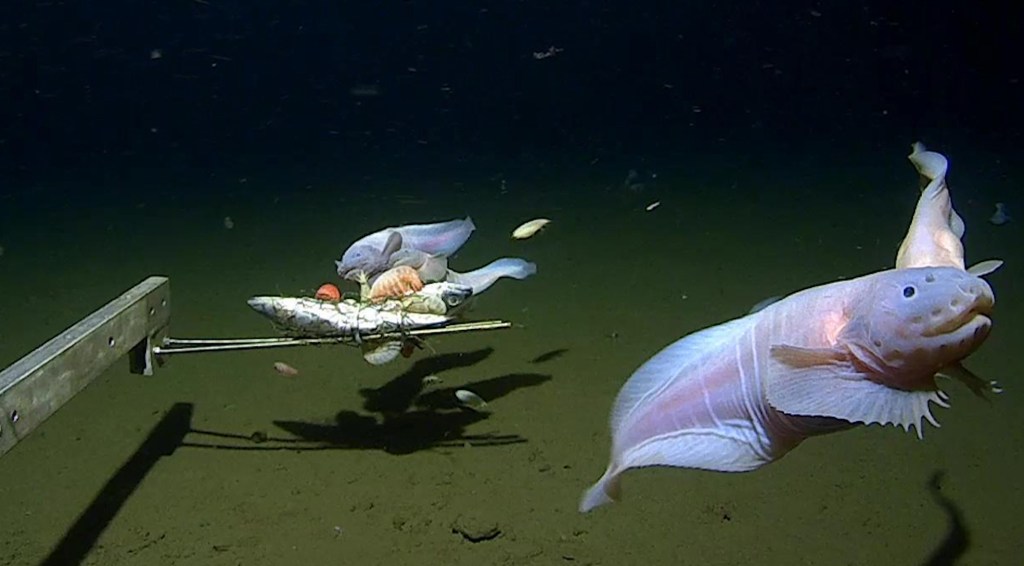The deepest marine organisms known to humans are contaminated by plastics, according to a study published Wednesday.
Researchers presented “the deepest record of microplastic ingestion, indicating it is highly likely there are no marine ecosystems left that are not impacted by plastic pollution,” according to the paper in Royal Society Open Science.
Videos by VICE
Led by Alan Jamieson, a marine ecologist at Newcastle University, the team examined the guts of small organisms called lysianassid amphipods—colloquially known as “sea fleas”—collected from six deep ocean habitats.
Though the trenches ranged in location from Japanese to Chilean waters, all of them were within the “hadal zone,” meaning they were at least 6,000 meters under the sea. The study even includes amphipods collected at Challenger Deep in the Mariana Trench, which is the lowest known point in the seabed at 10,890 meters below the ocean surface.
Despite such remote habitats, Jamieson’s team found plastic and synthetic fibres such as nylon, polyethylene, and polyvinyl alcohol in the guts of most amphipods they examined. “Of the 90 individual amphipods examined, 65 individuals (approximately 72 percent) contained at least one microfibre or fragment,” the team concluded.
The researchers called hadal habitats “the ultimate sink” for any contaminants that drift down from higher levels of the ocean. Because organisms that live in depleted and isolated regions often evolve to capitalize on carrion and food particles, they may be more prone to rapidly ingesting plastics that make it to the seafloor.
Amphipods at each location faced different odds of plastic ingestion. For instance, all of the Mariana Trench organisms had microplastics in their guts, whereas only half of the amphipods found in the New Hebrides Trench were contaminated. The team is not yet certain what causes this range between various locations, but higher consumption rates seem to be correlated with deeper habitats.
Read More: There Is Plastic ‘Everywhere,’ Says Guy Swimming Across Pacific Ocean
What is clear, though, is that plastic pollution in the deep ocean is not only a problem for the organisms that live there. Amphipods are food for fish, crustaceans, and even birds at the ocean surface, and some of its predators are consumed by humans. Microplastics eaten by small prey species can have implications for the entire marine food web.
“Once the microplastics enter the hadal food chain, there is a strong possibility that they will be locked into a perpetual cycle of trophic transfer,” the team cautioned.
While reports of dead animals washing up on shore with their stomachs filled with plastic have become sadly common, the new study reveals that beached carcasses are just the tip of the iceberg when it comes to plastic pollution in our oceans.
Get six of our favorite Motherboard stories every day by signing up for our newsletter.




